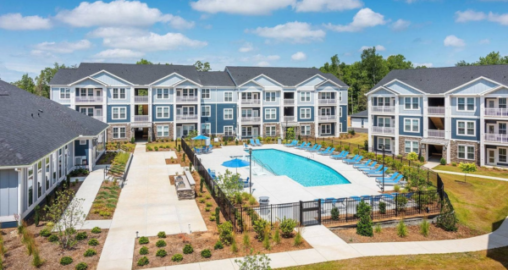 When President Joe Biden released his $1.8 trillion American Families Plan in April, one of the ways he proposed to pay for the increased federal spending was to limit the Internal Revenue Code Section 1031 like-kind exchange deferral amount to $500,000.
When President Joe Biden released his $1.8 trillion American Families Plan in April, one of the ways he proposed to pay for the increased federal spending was to limit the Internal Revenue Code Section 1031 like-kind exchange deferral amount to $500,000.
According to the president’s own numbers, the proposed cap would generate $2 billion a year for the U.S. Treasury Department. The problem is that the change would cost the government more than it would save. A recent study by Ernst and Young estimates that the current like-kind exchange provision generates almost $5 billion per year in direct and indirect federal taxes, along with billions of dollars in state and local taxes.
And it’s not just the federal government’s bottom line that would be hurt by a cap on the 1031 tax deferral. When you consider all the ways 1031s are used to benefit communities and individuals, it’s clear that the juice isn’t worth the squeeze!
Investment in Underserved Communities
For 100 years, the like-kind exchange has allowed real estate owners to exchange their property for other income-producing properties and defer the tax on any unrealized gain. When the owner eventually liquidates the investment, the government collects taxes on the gain. Often, the new property grows in value beyond the original investment, thus yielding increased tax revenue for the government. While there are rules about the time frame in which an exchange must be completed, there’s no cap on the amount a property owner can defer using this tax strategy.
By enabling property owners to channel gains into new real estate investment, like-kind exchanges serve as a crucial component to attract development dollars to underserved communities.
“As the Black community explores avenues for growth of their financial opportunities … the 1031 like-kind exchange is more important now than ever,” says Norman Alexander, president of the Ridgecrest Area Association of REALTORS® in Ridgecrest, Calif., and a member of the California Association of Black Real Estate Professionals.
The additional capital saved by not having to pay the tax immediately could invigorate an abandoned shopping area or an underused warehouse, allowing owners to transform outdated properties into more productive uses, such as affordable workforce housing or a job-generating e-commerce hub. A 2020 study by David Ling of the University of Florida and Milena Petrova of Syracuse University confirmed that the like-kind exchange garnered appreciably greater capital investment in properties compared with those purchased without an exchange.
“Every time we sell an apartment complex, we use the 1031; if it were not available, we would not be able to complete that transaction,” says Bill Brown, 2017 president of the National Association of REALTORS® and owner of Springhill Real Estate Partners. Brown’s company, based in the San Francisco Bay area, invests in multifamily properties in cities such as Boise, Idaho; Portland, Ore.; and Phoenix. “My company spends anywhere from $7,000 to $10,000 per unit on remodeling,” Brown says. “This helps provide jobs for laborers, as well as materials such as carpeting, cabinets, and many other goods.” Such upgrades not only provide jobs but also improve the quality of life for those who rent and live in the apartments.
David Doig, president and CEO of Chicago Neighborhood Initiatives, brought a national grocery store chain, Kroger’s, into a food desert in the Bronzeville neighborhood on the city’s South Side. The site, formerly the demolished Ida B. Wells public housing complex, had remained a vacant lot for more than 15 years. In its place, David’s company developed a Mariano’s supermarket, and then a New York investment group purchased the new development through a 1031 like-kind exchange. This outside capital infused jobs, housing, and commerce into the community.
 Daniel Wagner
Daniel Wagner
Daniel Wagner is senior vice president of government relations at The Inland Real Estate Group LLC.










